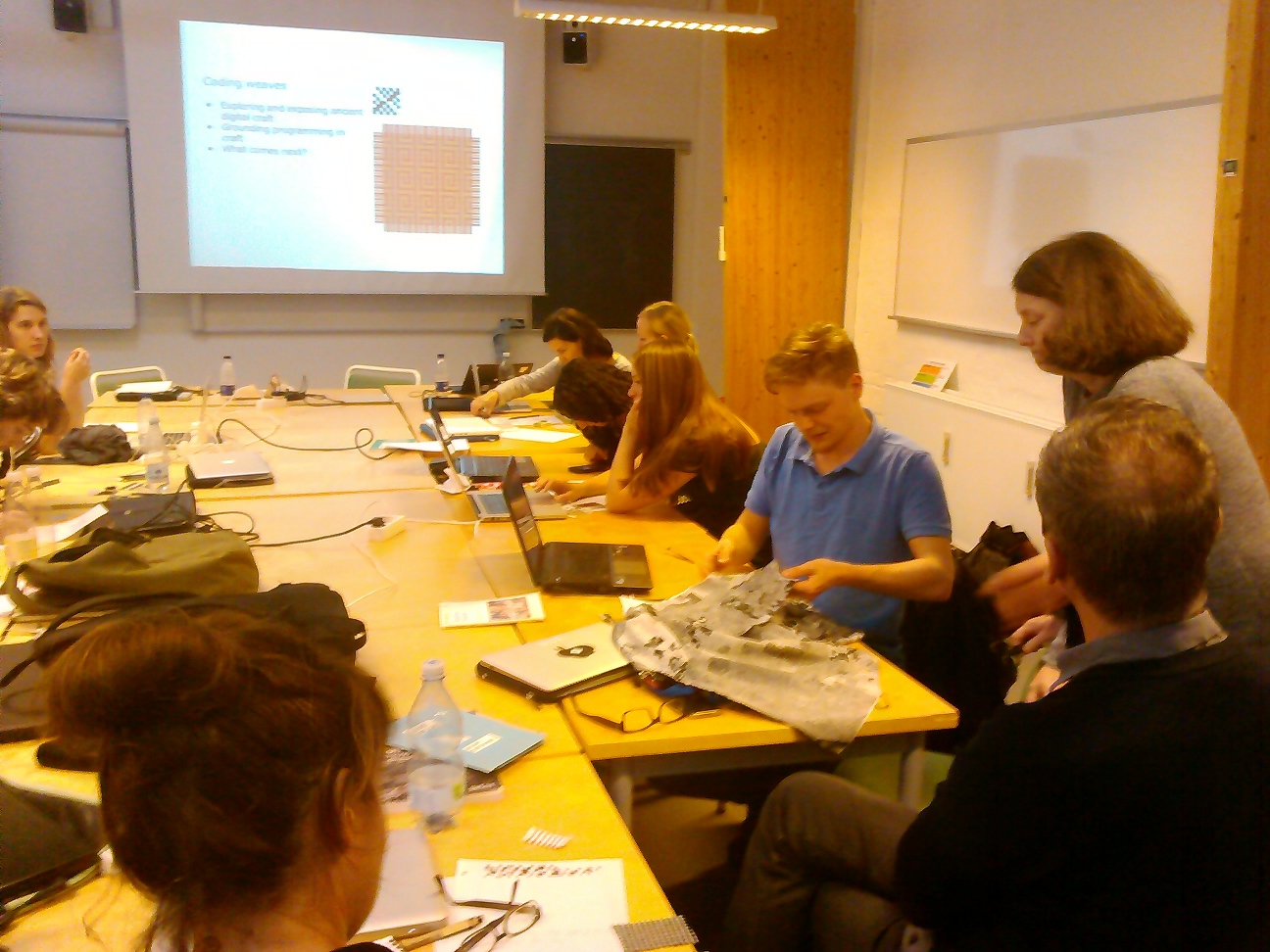Setting off from Copenhagen, the weaving codes tour continued as Emma Cocker, Alex McLean, Ellen Harlizius-Klück and I sped across the Danish countryside on the train. We were heading for Aarhus to spend some time working with people at the other end of the technology spectrum – The Center for Participatory IT in Aarhus University.
We were invited by Geoff Cox to run a workshop over two days, and given the nature of the faculty and time working together being at a premium on this project, we decided to to run the workshop more as invitation to join in our work (and therefore learn a bit about how artistic research is done), rather than having specific material to cover.

 Alex and I needed to learn from Ellen how to ‘read’ a textile sample and notate it’s structure, a kind of reverse engineering process. Day one consisted of sharing out different types of weave and carefully figuring out the crossing points of warp and weft. The first challenge is to attempt to find the smallest repeat of the pattern, then record on graph paper a cross where the warp threads show over the weft threads. The big surprise is that the weave does not obviously relate to the visible pattern. It can also be hard to determine from a small sample which direction is warp and which is weft, so you can choose this arbitrarily if need be.
Alex and I needed to learn from Ellen how to ‘read’ a textile sample and notate it’s structure, a kind of reverse engineering process. Day one consisted of sharing out different types of weave and carefully figuring out the crossing points of warp and weft. The first challenge is to attempt to find the smallest repeat of the pattern, then record on graph paper a cross where the warp threads show over the weft threads. The big surprise is that the weave does not obviously relate to the visible pattern. It can also be hard to determine from a small sample which direction is warp and which is weft, so you can choose this arbitrarily if need be.
We could then compare different weaves, and also different notation styles that people used – little shorthand ways of describing large areas of plain weave for example. Much of the fabric came from Ellen’s Pepita Virus exhibition, and contained many different sizes of the “dog tooth” pattern. By comparing the notation we had all recorded for our different samples, we could tell that to scale up a pattern it’s not the case that you can also scale up the weave – the structure needs to change completely between 4 or 5 different types.
Day two consisted of testing Alex’s Javascript loom/computer, by entering the weave structure and colour sequences and checking if the resulting patterns matched. By livecoding, we could also play with the patterns without the need to physically weave them, in order to gain a better insight into how changes affected the resulting pattern – and a better overall understanding of the weaving process.
To finish up, I talked about the patterns inherent in computation, based on my previous Z80 explorations to show how the pattern creating origins of computation are still present, and the role of programming languages as ways for people to come to shared understanding via notation rather than simply telling a machine what to do.





3 thoughts on “Learning to read, notate and compute textiles in Aarhus”